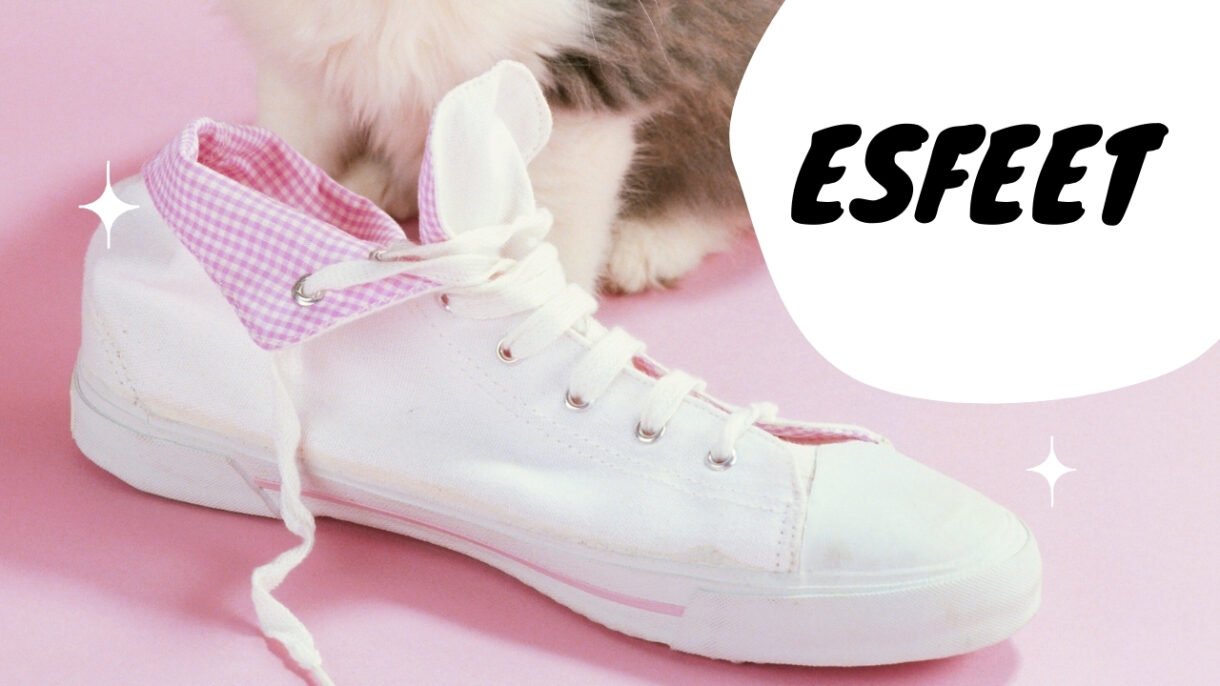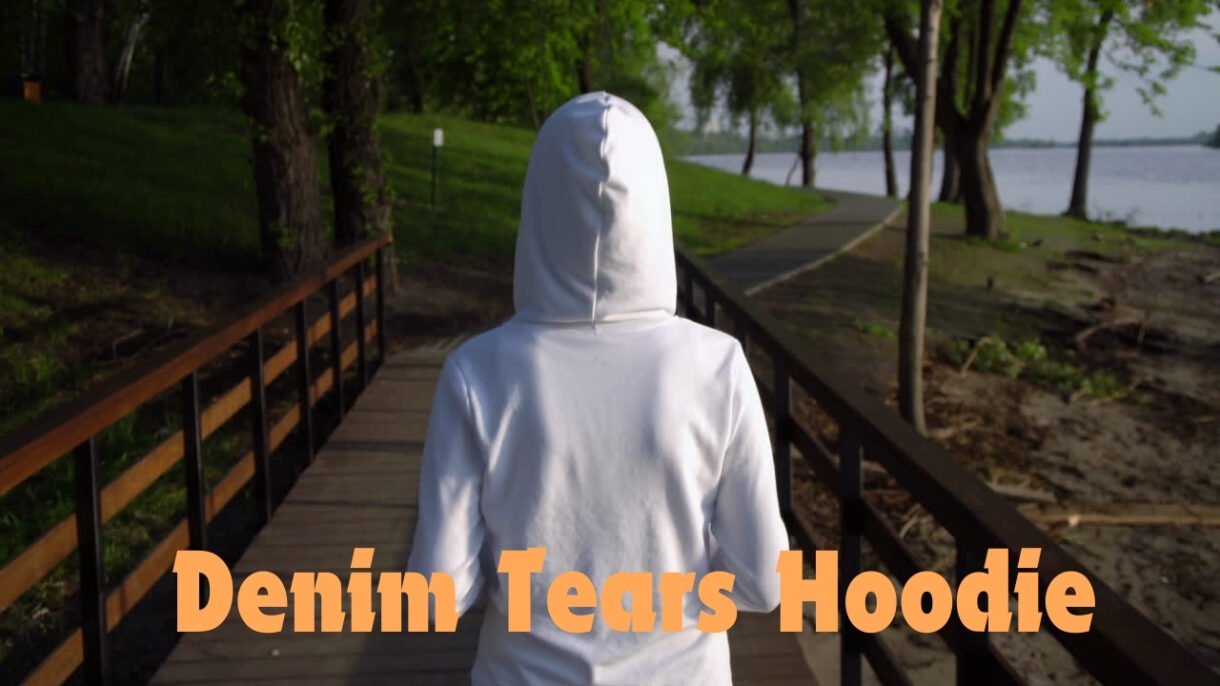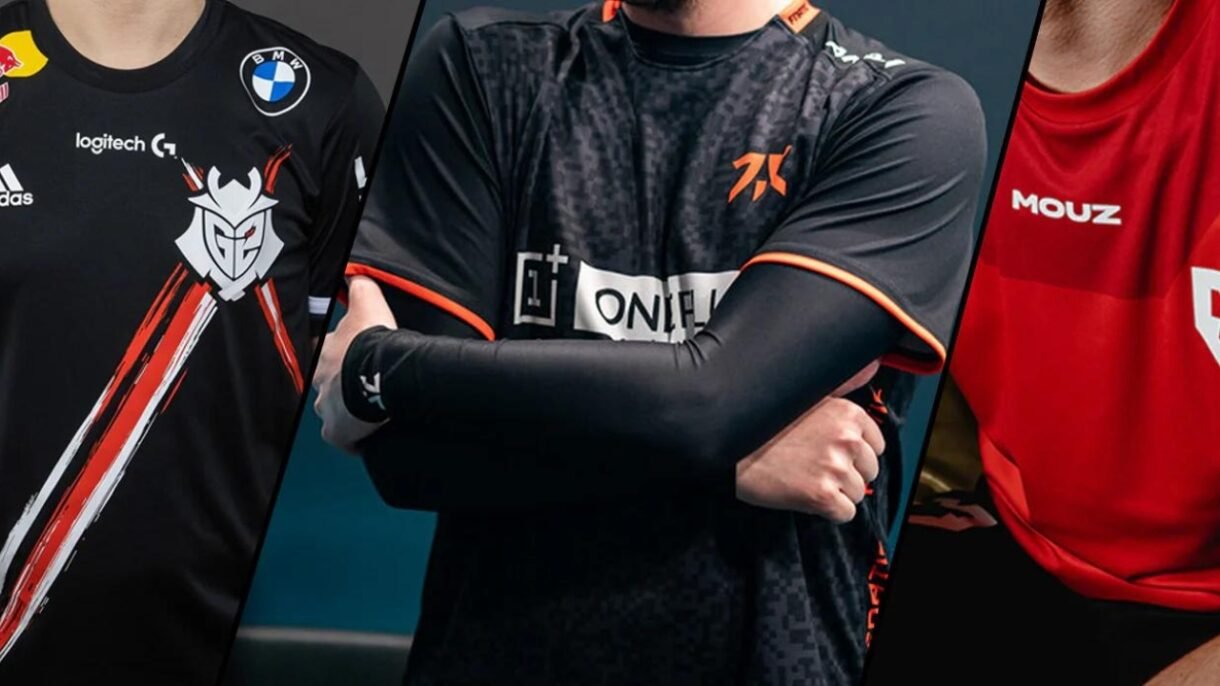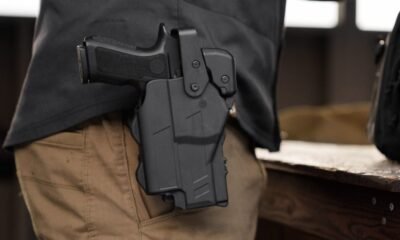Fashion
Esfeet: The Future of Fashion Footwear

Footwear is more than just an accessory; it’s a reflection of culture, status, and comfort. For centuries, we’ve seen it evolve from a simple piece of leather to a high-tech indicator of personal style. Today, we stand at the cusp of a revolution—Esfeet, a brand that redefines both the style and the soul of our beloved shoes. In this extended exploration, we tread through the rich tapestry of footwear’s evolution, pivoting towards Esfeet’s groundbreaking combination of design, sustainability, and innovation.
A Step Through Time: The Historical Evolution of Footwear
Footwear has left a print in time, with each period showcasing distinctive styles and needs. From the early protective coverings of animal skin and natural fibers to the opulent heights of heels across royal courts, shoes have always adapted to humanity’s story.
The Origins: Sleeping in Moccasins
The oldest known footwear dates back over 10,000 years, simple constructions of animal skins and furs laced to the foot. These protective foot coverings were a necessity, yet they signified the beginnings of personal adornment, craftsmanship, and personalization. Moccasins, for example, were worn by Native American tribes and were an intricate part of their culture, with different tribes designing these shoes in various patterns and styles.
A Royal Footing: The Renaissance and Beyond
Fast forward to the Renaissance and beyond, and footwear became an opulent expression of personal and societal wealth. Elaborate patterns, rich materials, and the introduction of the modern heel point towards fashion’s encroach further into daily life. The craze for high heels among both men and women in the 16th and 17th centuries was a status symbol associated with the upper class, and it wasn’t until later that function and practicality began to prevail.
The Industrial Revolution and Mass Production
The machinery of the Industrial Revolution broke through the craft of cobbling, bringing about a new era in the mass production of shoes. This evolution made footwear more affordable and thus more accessible, propelling it into the sphere of consumer goods. The advancements allowed for a variety of new styles and materials to be introduced, catering to a growing demand and shifting lifestyles.
Esfeet: A Sustainable Revolution in Footwear
As we’ve stepped into the 21st century, the narrative around what we wear, and how it is made, has transformed dramatically. Leading this charge is Esfeet, a brand that prides itself on a sustainable ethos deeply embedded in the very footprint of its products.
The Brand’s Ethos and Mission
Esfeet stands as a shining beacon in the footwear industry, championing a commitment to the environment and ethical manufacturing. Their mission doesn’t stop at crafting stylish shoes but extends to their belief in leaving a greener trace for the generations to come.
Materials Matter: From Waste to Wear
Esfeet has reimagined the materials that encase our feet, turning away from the industry’s heavy reliance on plastics and pollutants towards a plethora of eco-friendly alternatives. Repurposed materials, such as recycled rubber soles and organic cotton uppers, are woven into the shoes, making a statement that stylish footwear need not cost the earth.
Responsible Manufacturing: The Production Process
The innovative spirit of Esfeet shines through its sustainable practices at its production facilities. Their commitment to zero-waste and low-impact processes are at the core of the brand’s identity. They’ve not just invented a new breed of shoes; they’ve redesigned the paths these shoes take from concept to consumer.
Fashion Meets Function: The Esfeet Collection
Esfeet has shown us that sustainability doesn’t have to come at the cost of style. Their collection of sneakers, boots, and slides fuses the finest aspects of form and function, each pair echoing the brand’s commitment to quality and comfort.
The Sneaker that Started a Movement
Esfeet’s iconic sneaker, The Elemental, has set a new standard in the industry. Crafted from 100% vegan materials, it encapsulates the brand’s mission to provide a sneaker that’s light on the planet and lighter on your feet. The Elemental is more than a fashion statement; it’s a manifesto.
The Versatile Boot Series
Esfeet’s boot series is equally impressive, with each pair as sustainable as it is stylish. These are not simply boots; they’re a companion that walks with you through every season and terrain.
Slides for a Better Tomorrow
The philosophy of Esfeet extends even to the humble slide. These are not just poolside accessories, but a testament to the brand’s dedication to providing options that are durable, practical, and kind to the environment.
The Future of Footwear: Trends and Innovations
The footprints Esfeet has left pave the way for an exciting future in footwear. We’re witnessing an industry on the brink of transformation, aligning with a consumer audience increasingly mindful of their ecological impact.
The Road Ahead in Sustainable Footwear
Sustainability will only gain in significance in the coming decades. Esfeet, along with other eco-conscious brands, is leading the charge, gathering the momentum needed to set new industry standards. From these efforts, we can expect a surge of eco-footwear initiatives that embrace recycled and renewable materials along with ethical labor practices, setting a benchmark for all footwear to aspire to.
The Integration of Technology
Technology isn’t just about gadgets and gizmos; it’s about enhancing our lives and the products we use. The marriage of technology with footwear will see advancements in materials and manufacturing processes that make our shoes not only eco-friendly but also more functional and comfortable than ever before. 3D-printed shoes, for instance, might become the new standard in both bespoke and mass production lines.
Fashion Forward, Planet First
Esfeet’s fashion-forward approach is proof that looking good no longer has to mean doing harm. The future of fashion is one where style and sustainability seamlessly interweave. We’re looking at an era where the shoes we love to wear are also the ones we’re proud to stand for.
You May Also Like: Celebrating λιβαισ Across Traditions: Cultural Diversity and Unity
Conclusion:
The narrative of footwear is one that marches hand in hand with the story of human progress, style, and functionality. Esfeet’s role in this grand tale is that of an innovator—pushing boundaries and setting the bar high for a fashion industry that must look beyond trends and towards a sustainable future. Where will you step next in this story of elegant evolution? Perhaps it’s time to take that stylish leap with Esfeet, and be a part of the change the world needs—one sustainable step at a time.
Frequently Asked Questions
- What makes Esfeet sneakers sustainable?
Esfeet sneakers, particularly The Elemental model, are crafted from 100% vegan materials. This includes repurposed materials like recycled rubber for the soles and organic cotton for the uppers, emphasizing the brand’s commitment to reducing environmental impact and promoting eco-friendly fashion choices.
- Can Esfeet shoes be recycled?
Yes, Esfeet focuses on the circular economy concept, aiming to make their shoes as recyclable as possible. Their commitment to materials that can be reused and repurposed aligns with their mission to minimize waste and encourage sustainability in footwear.
- Are Esfeet products more expensive due to their eco-friendly materials?
While Esfeet utilizes high-quality, sustainable materials, they strive to keep their products affordable. The brand believes that sustainable fashion should be accessible to everyone, not just a premium option. This approach helps to encourage wider adoption of eco-friendly footwear.
- Where are Esfeet shoes produced?
Esfeet is dedicated to ethical manufacturing practices. Their production facilities operate under strict ethical standards, including the use of zero-waste and low-impact processes. This ensures that their shoes are not only environmentally friendly but also produced in a manner that respects worker rights and safety.
- How does Esfeet plan to stay ahead in sustainable footwear innovation?
Esfeet is committed to ongoing research and innovation in sustainable materials and production techniques. The integration of technology, such as 3D printing, alongside novel eco-friendly materials, positions Esfeet at the forefront of sustainable footwear. They continue to explore new ways to reduce their environmental footprint while delivering high-quality, fashionable footwear.
Fashion
The Denim Tears Hoodie Revolutionizing Streetwear Culture

Streetwear has always held a unique place in fashion. Combining comfort with bold statements, it has grown from niche subculture to mainstream phenomenon. One item making waves in this space is the Denim Tears hoodie. This iconic piece has captured the hearts of streetwear enthusiasts, fashion bloggers, and trendsetters alike. But what makes this hoodie so special? Here, we’ll explore the history and significance of the Denim Tears hoodie, tracing its rise from a niche item to a must-have in contemporary fashion.
The Origin Story
Origins and Background of the Brand “Denim Tears”
Denim Tears isn’t just a brand; it’s a movement. Founded by Tremaine Emory, a visionary designer known for blending art and activism, Denim Tears has made significant strides since its inception. The brand seeks to tell stories through its garments, intertwining cultural heritage with modern design. Denim Tears initially gained traction through its raw and poignant portrayal of African-American experiences, making it much more than a fashion label.
The Designer’s Inspiration and Vision Behind the Iconic Hoodie
Tremaine Emory’s vision for the Denim Tears hoodie was to create more than just a piece of clothing. Inspired by the rich history and cultural significance of denim in African-American communities, the hoodie serves as a canvas for storytelling. The distinct design elements, such as patches and embroidery, are carefully curated to pay homage to historical narratives. This thoughtful approach to design has struck a chord with many, transforming the hoodie into an emblem of cultural pride and awareness.
The Impact on Street Fashion
The Hoodie’s Immediate Reception in the Streetwear Community
The Denim Tears hoodie was met with widespread acclaim the moment it hit the streets. Streetwear aficionados recognized its unique aesthetic and the powerful message it conveyed. Unlike generic hoodies, this piece integrated art and history, making it an instant hit. Forums, social media platforms, and streetwear blogs buzzed with excitement, and the hoodie quickly became a coveted item.
Influencer and Celebrity Endorsements That Propelled Its Popularity
Influencers and celebrities have played a crucial role in amplifying the popularity of the Denim Tears hoodie. High-profile endorsements from the likes of Kanye West, A$AP Rocky, and Virgil Abloh gave the hoodie mainstream visibility. Each public appearance or Instagram post featuring the hoodie further solidified its status as a must-have item. These endorsements propelled it from underground sensation to mainstream marvel, securing its place in the streetwear hall of fame.
The Versatility of the Denim Tears Hoodie
Styling Tips for Incorporating the Hoodie Into Diverse Fashion Looks
One of the standout features of the Denim Tears hoodie is its versatility. Whether you’re aiming for a casual look or something more polished, this hoodie adapts seamlessly. For a laid-back vibe, pair it with ripped jeans and sneakers. Looking to elevate the look? Throw on a tailored overcoat and some sleek boots. The possibilities are endless, making it a favorite among fashion enthusiasts who love to experiment.
Its Appeal Across Different Age Groups and Genders
The Denim Tears hoodie transcends age and gender boundaries. Its universal design elements make it appealing to a wide demographic. Young adults appreciate its trendy vibe, while older generations admire its cultural significance. The unisex design ensures that anyone can wear it, breaking down traditional fashion barriers and making it a truly inclusive piece.
Sustainability and Ethical Fashion Practices
Denim Tears’ Commitment to Sustainable and Ethical Production
In today’s fashion landscape, sustainability is more than just a buzzword; it’s a necessity. Denim Tears has taken significant steps to ensure their production processes are sustainable and ethical. From sourcing eco-friendly materials to ensuring fair labor practices, the brand is committed to making a positive impact on the environment and society. This dedication to sustainability adds another layer of appeal to the already desirable hoodie.
The Impact of the Hoodie on Changing Consumer Perceptions Towards Sustainable Fashion
The Denim Tears hoodie has played a pivotal role in shifting consumer perceptions towards sustainable fashion. By offering a product that combines style, cultural significance, and ethical production, Denim Tears has set a new standard in the industry. Consumers are increasingly looking for brands that align with their values, and the Denim Tears hoodie meets those criteria. This shift is encouraging more brands to adopt sustainable practices, making the fashion industry more responsible.
Future of the Denim Tears Hoodie
Predictions on Its Longevity and Continued Influence in Fashion Trends
The Denim Tears hoodie isn’t just a fleeting trend; it’s here to stay. Its blend of cultural storytelling, versatile design, and sustainable practices ensures its longevity. As more consumers become aware of the stories behind their clothing, the demand for meaningful fashion pieces will only grow. The Denim Tears hoodie is poised to remain a staple in streetwear fashion for years to come, continually influencing trends and setting new standards.
The Potential for Collaborations or New Designs Within the Brand
Looking ahead, the potential for collaborations or new designs within the Denim Tears brand is exciting. Tremaine Emory has already proven his ability to create iconic pieces, and future collaborations could bring even more innovative designs. Whether it’s partnering with other designers, artists, or even different brands, the possibilities are endless. Each new release will undoubtedly be met with anticipation and excitement, further cementing Denim Tears’ place in fashion history.
You May Also Like: Discover Lasée: Timeless Elegance for Fashion and Home
Conclusion
The Denim Tears hoodie is more than just a piece of clothing; it’s a movement. From its origins and cultural significance to its impact on street fashion and commitment to sustainability, this hoodie has set new standards in the fashion industry. Its versatility and universal appeal make it a must-have for streetwear enthusiasts, fashion bloggers, and trendsetters.
If you’re looking to make a statement with your wardrobe, the Denim Tears hoodie is a perfect choice. It’s not just about fashion; it’s about wearing a piece of history. Join the movement and add this iconic hoodie to your collection today. For more insights and exclusive deals, sign up for our newsletter and stay ahead of the fashion curve.
By wearing the Denim Tears hoodie, you’re not just making a fashion statement; you’re joining a community that values cultural significance, sustainability, and style. Explore, express, and elevate your fashion game with the Denim Tears hoodie.
FAQs
What makes the Denim Tears hoodie special?
The Denim Tears hoodie stands out due to its unique blend of cultural storytelling, versatile design, and commitment to sustainability. It’s more than just a piece of clothing; it’s a movement.
How can I style the Denim Tears hoodie?
The hoodie is incredibly versatile. For a casual look, pair it with ripped jeans and sneakers. To elevate the look, add a tailored overcoat and sleek boots. The possibilities are endless.
Is the Denim Tears hoodie suitable for all ages and genders?
Yes, the unisex design and universal appeal make it suitable for all ages and genders. It transcends traditional fashion boundaries, making it an inclusive piece.
What are the sustainability practices behind the Denim Tears hoodie?
Denim Tears is committed to sustainable and ethical production. From sourcing eco-friendly materials to ensuring fair labor practices, the brand strives to make a positive impact on the environment and society.
Where can I buy the Denim Tears hoodie?
You can purchase the Denim Tears hoodie from our official website or select retail partners. Sign up for our newsletter to stay updated on new releases and exclusive deals.
Will there be new designs or collaborations in the future?
Yes, the potential for new designs and collaborations within the Denim Tears brand is exciting. Stay tuned for future releases and partnerships.
Fashion
Exploring Áo Thể Thao Thiết Kế: The Pinnacle of Custom Sports Apparel in Vietnam

In the realm of sports fashion, finding the perfect balance between style, comfort, and functionality is crucial. For Vietnamese sports enthusiasts and athletes, aothethaothietke.com has become a go-to destination for custom-designed sports apparel. Specializing in football and esports jerseys, Áo Thể Thao Thiết Kế offers unique and personalized options that cater to the vibrant and ever-evolving sports scene in Vietnam.
The Rise of Custom Sports Apparel
The trend of custom-designed sports apparel has taken the world by storm, and Vietnam is no exception. Athletes and sports fans alike seek gear that not only performs well but also represents their personal style and team spirit. Áo Thể Thao Thiết Kế stands at the forefront of this trend, providing high-quality, bespoke sportswear that meets the diverse needs of its customers.
Football Jerseys: Merging Tradition with Innovation
Football is more than just a sport in Vietnam; it’s a passion that unites communities. Áo Thể Thao Thiết Kế understands this cultural significance and offers custom football jerseys that combine traditional elements with modern design. Customers can choose from a variety of fabrics, colors, and patterns to create jerseys that are both stylish and functional. Whether for professional teams or local clubs, these jerseys are designed to enhance performance while making a bold fashion statement.
Esports Jerseys: The New Frontier
As esports continues to gain popularity globally, Vietnam is quickly becoming a hub for competitive gaming. Áo Thể Thao Thiết Kế caters to this growing market by offering custom-designed esports jerseys. These jerseys are crafted to provide comfort during long gaming sessions and feature eye-catching designs that reflect the dynamic and energetic nature of esports. By wearing custom jerseys, esports teams can showcase their unique identity and foster a sense of unity among players and fans.
Embracing Sports Fashion Trends
Áo Thể Thao Thiết Kế stays ahead of the curve by incorporating the latest sports fashion trends into their designs. This includes the use of advanced materials that enhance breathability and moisture-wicking properties, ensuring athletes stay cool and dry. Additionally, the website offers a variety of design options, from minimalist and sleek to bold and vibrant, catering to different tastes and preferences.
The Customization Process
The customization process at Áo Thể Thao Thiết Kế is straightforward and customer-centric. Here’s a glimpse of how it works:
- Design Selection: Customers can browse through a range of templates or submit their own designs.
- Fabric and Color Choice: Choose from a variety of high-quality fabrics and a wide spectrum of colors.
- Personalization: Add names, numbers, and logos to create a truly unique piece of apparel.
- Review and Approval: Review the final design before placing the order.
- Production and Delivery: Once approved, the jerseys are produced with precision and delivered to the customer’s doorstep.
The Vibrant Esports Scene in Vietnam
Vietnam’s esports scene is booming, with numerous tournaments and events taking place throughout the year. Custom esports jerseys from Áo Thể Thao Thiết Kế help teams stand out in this competitive environment. The jerseys are not only stylish but also designed to provide maximum comfort and flexibility, crucial for intense gaming sessions.
Conclusion
Áo Thể Thao Thiết Kế has established itself as a leader in the custom sports apparel industry in Vietnam. By combining cutting-edge design, high-quality materials, and a deep understanding of local sports culture, the website offers unparalleled products for both football and esports enthusiasts. Whether you’re a professional athlete, a weekend warrior, or an avid gamer, Áo Thể Thao Thiết Kế provides the perfect platform to express your passion and style through custom-designed sportswear.
Visit aothethaothietke.com today to explore their offerings and take your sports fashion to the next level.
Fashion
Discover Lasée: Timeless Elegance for Fashion and Home

Lasée is a term that encompasses a wide range of delicate, intricate textile products, often associated with elegance and tradition. But what exactly is lasée, and why has it remained so popular over the centuries? In this article, we’ll dive deep into the world of lasée, exploring its history, various types, cultural significance, and modern uses. Whether you’re a fashion enthusiast, a home decor aficionado, or simply curious about this beautiful art form, there’s something here for you.
Understanding Lasée
What is Lasée?
Lasée refers to a type of intricate, ornamental fabric that is often created by looping, twisting, or knitting threads in patterns. It is typically made from fine threads of cotton, silk, or synthetic materials, resulting in a fabric that is both lightweight and visually appealing. Lasée can be used in a variety of applications, from clothing and accessories to home decor items like curtains and tablecloths.
Origins and History
The history of lasée dates back to ancient times. Some of the earliest examples of lasée come from ancient Egypt, where it was used in both clothing and household items. Over the centuries, the techniques for creating lasée evolved and spread to various parts of the world, including Europe and Asia. In the 16th century, lasée became particularly popular in Europe, with countries like Italy, France, and Belgium becoming renowned for their exquisite lasée craftsmanship.
Types of Lasée
Traditional Lasée
Traditional lasée is created using time-honored methods that have been passed down through generations. This type of lasée often features intricate patterns and is made by hand, which makes it highly valued for its craftsmanship. Examples of traditional lasée include Venetian lace, Chantilly lace, and Belgian lace.
Modern Lasée
Modern lasée, on the other hand, often incorporates contemporary designs and may be produced using modern machinery. While still maintaining a high level of detail and beauty, modern lasée can be made more quickly and in larger quantities. This has made lasée more accessible to a wider audience, allowing it to be used in a variety of modern fashion and home decor items.
Materials Used in Lasée
Natural Materials
Traditional lasée often uses natural materials such as cotton, silk, and linen. These materials are prized for their durability and luxurious feel. Cotton lasée is known for its breathability and softness, making it ideal for clothing items like dresses and blouses. Silk lasée, with its smooth texture and natural sheen, is often used in high-end fashion and bridal wear.
Synthetic Materials
In recent years, synthetic materials like nylon and polyester have become popular in lasée production. These materials are often more affordable and can mimic the appearance of natural fibers while offering increased durability and ease of care. Synthetic lasée is commonly used in everyday clothing and home decor items, providing a cost-effective alternative to natural fiber lasée.
Techniques of Creating Lasée
Handcrafted Techniques
Handcrafted lasée is created using traditional methods such as needle lace, bobbin lace, and tatting. These techniques require a high level of skill and patience, as each piece is meticulously crafted by hand. Needle lace involves using a needle and thread to create intricate patterns, while bobbin lace uses a series of bobbins to weave threads into a design. Tatting, a form of lace-making that involves creating loops and knots, is another popular handcrafted technique.
Machine Techniques
With advancements in technology, many lasée products are now made using machines. Machine-made lasée can be produced more quickly and with greater consistency than handcrafted lasée. There are various types of lace-making machines, including the Leavers machine, which can replicate the look of hand-made lace, and the Raschel machine, which is used for producing more elastic and stretchable lace.
Cultural Significance of Lasée
Lasée in Different Cultures
Lasée holds a special place in the cultural heritage of many countries. In Europe, for example, lasée has been a symbol of luxury and refinement for centuries. In places like France and Italy, lasée-making is considered an art form, with each region having its unique styles and techniques. In Asia, particularly in countries like India and China, lasée is often used in traditional clothing and ceremonial garments, adding a touch of elegance and tradition to special occasions.
Symbolism and Meaning
Beyond its aesthetic appeal, lasée often carries symbolic meanings. In many cultures, lasée is associated with purity, elegance, and refinement. It is frequently used in bridal wear, symbolizing the bride’s purity and grace. In some cultures, lasée is also seen as a symbol of status and wealth, with intricate, handcrafted pieces being highly prized and often passed down as heirlooms.
Lasée in Fashion
Popular Uses in Clothing
Lasée has long been a favorite material in the fashion industry. It is commonly used in evening gowns, bridal wear, and lingerie, where its delicate patterns and sheer quality add a touch of elegance and femininity. Lasée can also be found in more casual clothing, such as blouses, skirts, and tops, where it adds a decorative element to everyday outfits.
Iconic Lasée Designs
Over the years, many iconic lasée designs have emerged in the world of fashion. Designers like Coco Chanel and Christian Dior have famously incorporated lasée into their collections, creating timeless pieces that continue to inspire modern fashion. Lasée collars, cuffs, and trims have become signature elements in many high-end fashion designs, showcasing the versatility and enduring appeal of this beautiful fabric.
Lasée in Home Decor
Curtains and Drapes
One of the most popular uses of lasée in home decor is in curtains and drapes. Lasée curtains can add a touch of elegance and sophistication to any room, allowing natural light to filter through while providing a degree of privacy. They are available in a variety of styles and patterns, from delicate floral designs to bold geometric patterns, making it easy to find the perfect lasée curtains to match your home decor.
Tablecloths and Doilies
Lasée tablecloths and doilies are another popular choice for home decor. These items can add a touch of vintage charm to your dining room or living area, creating a warm and inviting atmosphere. Lasée tablecloths are often used for special occasions, such as weddings and holidays, where their intricate designs and delicate patterns can be fully appreciated.
Caring for Lasée Items
Cleaning Tips
Caring for lasée items requires special attention to maintain their delicate structure and intricate designs. Here are some tips for cleaning lasée.
Hand Wash: Whenever possible, hand wash lasée items in lukewarm water with a gentle detergent. Avoid wringing or twisting the fabric to prevent damage.
Dry Flat: Lay lasée items flat to dry on a clean, dry towel. Avoid hanging them to prevent stretching.
Avoid Bleach: Do not use bleach or harsh chemicals, as they can weaken the fibers and damage the delicate patterns.
Storage Tips
Proper storage is essential to keep your lasée items in good condition. Follow these tips.
Fold Carefully: Fold lasée items carefully, avoiding sharp creases that could damage the fabric.
Store in a Cool, Dry Place: Keep lasée items in a cool, dry place away from direct sunlight to prevent discoloration.
Use Acid-Free Tissue Paper: Wrap lasée items in acid-free tissue paper to protect them from dust and moisture.
Lasée Market Trends
Current Trends
The lasée market is constantly evolving, with new trends emerging each year. Currently, there is a growing interest in sustainable and ethically-produced lasée. Consumers are becoming more aware of the environmental impact of textile production and are seeking out lasée products made from organic materials and produced using eco-friendly methods.
Future Predictions
Looking ahead, the future of the lasée market appears bright. As technology continues to advance, we can expect to see even more innovative designs and production techniques. Additionally, the demand for unique, handcrafted lasée items is likely to remain strong, as consumers continue to appreciate the artistry and craftsmanship involved in traditional lasée-making.
Buying Guide for Lasée
What to Look For
When buying lasée, there are several factors to consider to ensure you are getting a high-quality product.
Material: Check the material used in the lasée. Natural fibers like cotton and silk are often preferred for their quality and feel.
Craftsmanship: Look for intricate patterns and even stitching, which are indicators of good craftsmanship.
Origin: Consider the origin of the lasée. Certain regions, like France and Italy, are known for their high-quality lasée products.
Where to Buy
Lasée can be purchased from a variety of sources, including.
Specialty Stores: Many specialty stores offer a wide range of lasée products, from clothing to home decor items.
Online Retailers: There are numerous online retailers that specialize in lasée, offering a convenient way to shop from the comfort of your home.
Markets and Fairs: Local markets and craft fairs are great places to find unique, handcrafted lasée items.
DIY Lasée Projects
Simple DIY Projects
If you’re feeling crafty, there are many simple DIY lasée projects you can try at home. Some ideas include.
Lasée Trimmed Handkerchiefs: Add a touch of elegance to plain handkerchiefs by sewing on a lasée trim.
Lasée Bookmarks: Create beautiful bookmarks using small pieces of lasée and ribbon.
Lasée-Edged Pillowcases: Give your pillowcases a luxurious upgrade by adding a lasée edge.
Advanced DIY Projects
For those with more experience, there are advanced lasée projects that can be both challenging and rewarding. Some examples include.
Lasée Tablecloth: Create a stunning lasée tablecloth for special occasions.
Lasée Dress: Design and sew a custom lasée dress, perfect for weddings or formal events.
Lasée Curtains: Make your own lasée curtains to add a touch of elegance to your home.
Sustainability in Lasée Production
Eco-friendly Practices
As consumers become more environmentally conscious, there is a growing demand for sustainable lasée production. Some eco-friendly practices in lasée production include.
Organic Materials: Using organic cotton and other natural fibers that are grown without harmful pesticides.
Eco-friendly Dyes: Utilizing dyes that are free from harmful chemicals and pollutants.
Energy-efficient Production: Implementing energy-efficient practices in the production process to reduce carbon footprint.
Sustainable Brands
Several brands are leading the way in sustainable lasée production. These brands prioritize ethical sourcing, eco-friendly materials, and fair labor practices, making it easier for consumers to make environmentally responsible choices.
Challenges in the Lasée Industry
Counterfeit Products
One of the major challenges in the lasée industry is the proliferation of counterfeit products. These fake lasée items often use low-quality materials and inferior craftsmanship, deceiving consumers and damaging the reputation of genuine lasée products.
Market Competition
The lasée market is highly competitive, with many producers vying for the attention of consumers. This competition can drive innovation and quality improvements, but it can also lead to price undercutting and reduced profit margins for artisans and small businesses.
You May Also Like: Jeansato Jeans: Where Quality Meets Eco
Conclusion
Lasée is a timeless and versatile fabric that has captivated people for centuries with its intricate designs and delicate beauty. Whether used in fashion, home decor, or cultural traditions, lasée continues to be a symbol of elegance and craftsmanship. By understanding its history, techniques, and cultural significance, we can better appreciate the artistry and effort that goes into creating each piece of lasée.
FAQs
What is the difference between traditional and modern lasée?
Traditional lasée is handcrafted using time-honored techniques, while modern lasée is often produced using machines and contemporary designs.
How should I care for my lasée items?
Hand wash them in lukewarm water, dry flat, and avoid using bleach or harsh chemicals. Store them in a cool, dry place wrapped in acid-free tissue paper.
Where can I buy high-quality lasée?
You can find high-quality lasée at specialty stores, online retailers, and local markets or craft fairs.
What are some simple DIY lasée projects?
Some easy projects include lasée trimmed handkerchiefs, lasée bookmarks, and lasée-edged pillowcases.
What are the current trends in the lasée market?
There is a growing interest in sustainable and ethically-produced lasée, with consumers seeking organic materials and eco-friendly production methods.
-

 Business and Finance5 months ago
Business and Finance5 months agoThe 5 Ways to Boost Your Cash Flow Forecasting Instantly
-

 Blog7 months ago
Blog7 months agoHow It Works Magazine: A Comprehensive Guide
-

 Sports4 months ago
Sports4 months agoThe Best Games on Unblocked Games 67
-

 Food4 months ago
Food4 months agoExploring the Flavorful World of Cassasse: A Culinary Journey
-

 Blog4 months ago
Blog4 months agoExploring the Wonders of Geek Culture with Geekzilla Podcast
-

 Entertainment4 months ago
Entertainment4 months agoExploring The Grand Duke Is Mine Spoilers: A Comprehensive Guide
-

 Business and Finance7 months ago
Business and Finance7 months agoThe Seven Ps of a Highly Successful CFO
-

 News4 months ago
News4 months agoDiscovering Alien Gear Holsters: Your Ultimate Destination for Quality Shooting Gear

























